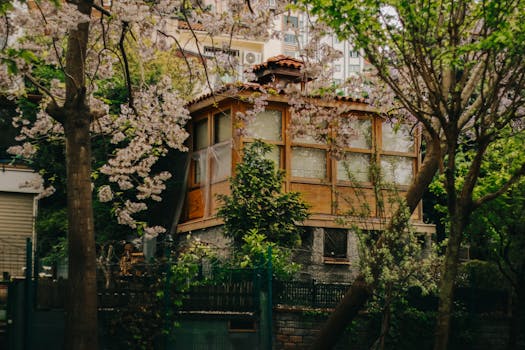
Urban Green Spaces: The Future of Outdoor Living in European Cities by 2025
Urban Green Spaces are becoming increasingly important in European cities as they provide numerous benefits for both the environment and the citizens. These green spaces, ranging from small parks to large urban forests, help to mitigate the effects of climate change, improve air quality, and enhance the overall quality of life.
Introduction to Urban Green Spaces
Urban green spaces are areas of vegetation, such as parks, gardens, and urban forests, that are found within cities. They provide a range of ecosystem services, including air and water filtration, soil formation, and climate regulation. In addition to their environmental benefits, urban green spaces also offer social and economic advantages, such as increased property values, improved mental health, and enhanced recreational opportunities.
Benefits of Urban Green Spaces
The benefits of urban green spaces are numerous and well-documented. Some of the most significant advantages include:
- Improved air quality: Urban green spaces help to remove pollutants from the air, improving respiratory health and reducing the risk of respiratory diseases.
- Climate regulation: Green spaces can help to mitigate the urban heat island effect, reducing the temperature and improving comfort levels.
- Enhanced mental health: Spending time in nature has been shown to reduce stress levels, improve mood, and enhance overall mental well-being.
- Increased biodiversity: Urban green spaces provide habitats for a range of plant and animal species, helping to maintain biodiversity and ecosystem health.
Challenges and Opportunities for Urban Green Spaces
Despite the many benefits of urban green spaces, there are also several challenges and opportunities that must be addressed. Some of the most significant include:
- Urbanization and land use change: The rapid expansion of cities can lead to the loss of green spaces, highlighting the need for effective urban planning and management.
- Climate change: Urban green spaces can help to mitigate the effects of climate change, but they are also vulnerable to its impacts, such as increased temperatures and altered precipitation patterns.
- Community engagement and participation: Urban green spaces can provide opportunities for community engagement and social interaction, helping to build stronger, more resilient communities.
Case Studies of Urban Green Spaces in European Cities
There are many examples of successful urban green spaces in European cities, each with its own unique characteristics and benefits. Some of the most notable include:
- Hyde Park in London, UK: One of the largest urban parks in Europe, Hyde Park provides a range of recreational opportunities, including boating, cycling, and walking.
- Parc de la Villette in Paris, France: This large urban park features a range of cultural and recreational facilities, including museums, concert halls, and gardens.
- Tempelhofer Feld in Berlin, Germany: This former airport has been transformed into a large urban park, providing a range of recreational opportunities, including cycling, skating, and picnicking.
Conclusion and Future Directions
Urban Green Spaces will play an increasingly important role in shaping the future of outdoor living in European cities. As cities continue to grow and expand, it is essential that we prioritize the creation and maintenance of these vital green areas. By providing a range of ecosystem services, social benefits, and recreational opportunities, urban green spaces can help to create healthier, more sustainable, and more livable cities for generations to come.






